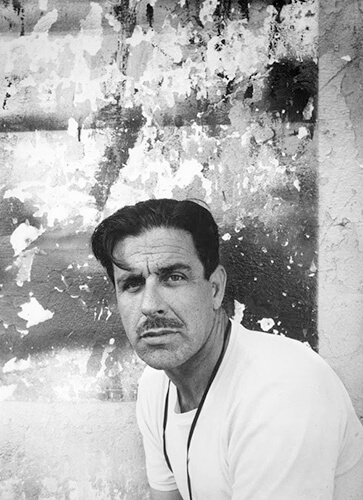Marcel Giró was born in Badalona (Spain) in 1913. Since his youth he was fond of mountain trekking and photography.
At the beginning of the Spanish Civil War he enlisted as a volunteer on the Republican side. In 1937, disappointed by the constant fighting between the different factions fighting against Franco, he decided to exile. He walked through the Pyrenees to France where he spent nearly two years doing all kinds of jobs. Finally in 1940 he was able to travel to Colombia with two Catalan companions, where they set up a small textile business. He married Palmira Puig, and they moved to Brazil, where they settled.
In Brazil Giró resumed his hobby and ended devoted to professional photography. In 1953 he opened his own studio in Sao Paulo, Estúdio Giró.
Marcel Giró became one of the leading photographers of the country, an active member of what became known as Escola Paulista. This movement, pioneer of modernist photography in Brazil was born around Foto Cine Club Bandeirante, in the 50s and 60s, with photographers like José Yalenti, Thomaz Farkas, Gertrudes Altschul, Eduardo Salvatore, Chico Albuquerque, Geraldo de Barros, Rubens Teixeira Scavone, Ademar Manarini, German Lorca and Gaspar Gasparian among others.
He exhibited his works all over Brazil and around the world. His works are today in collections like the MASP (Sao Paulo Museum of Modern Art), Itaú Cultural (Itaú Bank), the Metropolitan Museum and the MoMA, in New York, among others.
Giró was also one of the pioneers of advertising photography in Brazil. In his studio worked young assistants that later become world-renowned as great photographers like Marcio Scavone and JR Duran.
After the death of his wife in 1978, he left professional photography and artistic photography. He sold the studio and returned to Catalonia.
During the 80's and 90's, he began to paint with a very close criteria to his Photography works of the 50s.
He died in Mirasol (Barcelona) in 2011, at age 98.
For exhibitions and sales in Europe contact Toni Ricart Giró: toniricart@marcelgiro.com
For exhibitions and sales in rest of the world Isabel Amado: isabel@isabelamado.com.br
